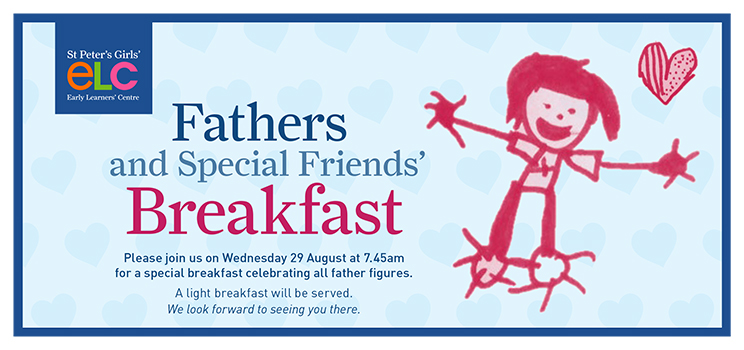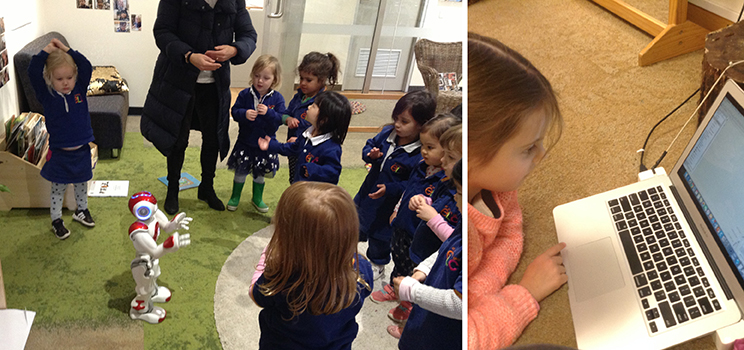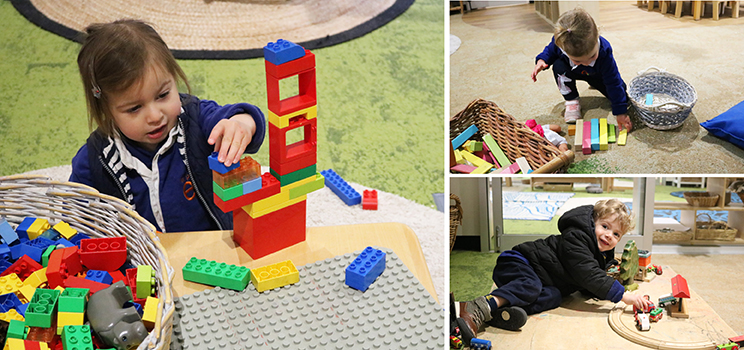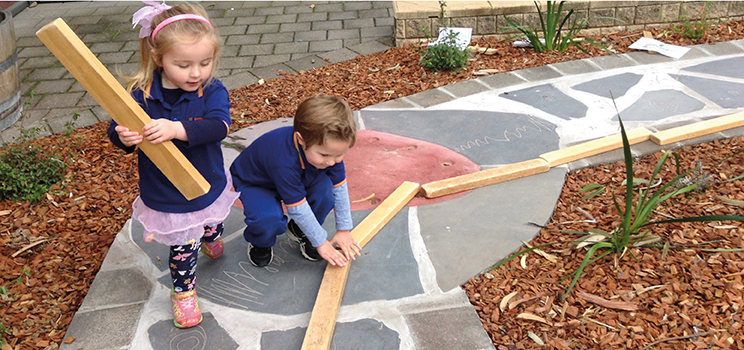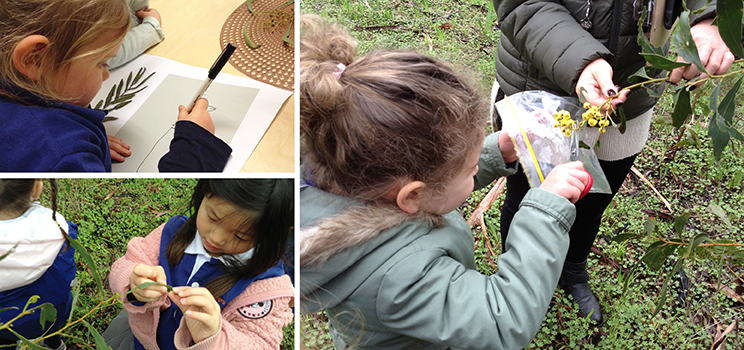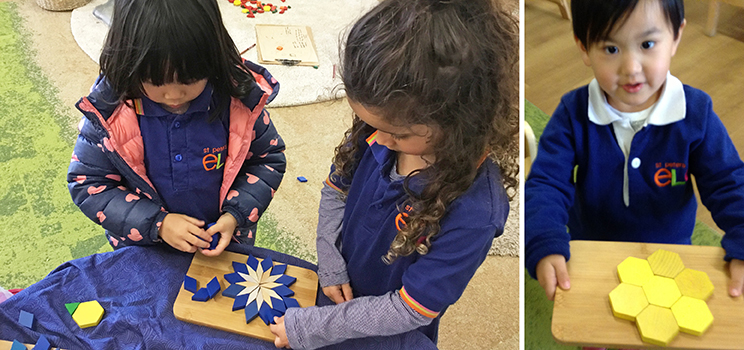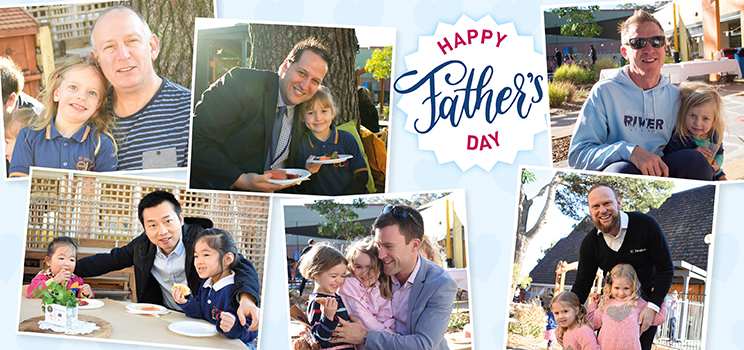
From the Acting Director of Early Learning
Dear Families
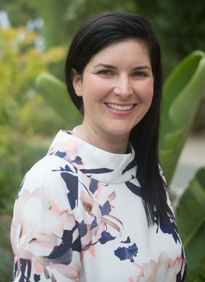
This term, the ELC educators made the decision to share with our community how we embed Mathematics into the daily lives of the children in a way that is relevant and meaningful. We believe it is important to consider the rich diversity of experiences and contexts that we can offer to extend children’s thinking and understanding. We recognise it is important to provide a supportive environment where children can ask questions and engage in critical thinking.
The ELC and Junior School educators have been working alongside consultant and internationally-acclaimed curriculum leader Lisa-Jane O’Connor. She has engaged us in workshops about the learning and teaching of Mathematics in the early years, and ways that families can work with their children at home. Lisa-Jane has been a wonderful professional to collaborate with as she has challenged the ELC educators to think differently and to be creative in their approaches.
We have a unique opportunity in the ELC to utilise the Atelier to further support our investigations looking through a mathematical lens. Creativity is one of our core values at St Peter’s Girls’ School, and the ELC leads the way with an innovative approach to children’s artistic expression. Each room has an Atelier space where we nourish creativity. The culture of the Atelier is one that values the importance of imagination, aesthetics and the theory of the hundred languages. It is a place of research and discovery, where creativity is free. Caterina Pennestri, our Atelierista, collaborates with our staff to ensure children are being exposed to the many forms of artistic expression and that our documentation places the child’s voice at the centre.
An experience that I would like to share with you was one I witnessed in the Stonyfell Room Atelier. Mrs Caterina was working alongside a group of children in the staff office using the photocopier. The children were exploring a new space in the ELC and were delighted with the suspense and surprise when the photocopier made a noise and then produced a copy on paper. They were so joyous and filled with smiles. While the children relished the opportunity to experiment with the photocopier, the educators had a very clear intention behind the experience. The intention was to use the photocopier as a tool of multiplication. The children were multiplying their loved objects or their hands in different positions and thinking of numbers. They were then asked to create a symbolic-numeric representation using lines. The children were challenged because of the mirror effect of the photocopier so they needed to explore the shapes and change the position of the objects to match them together.
This experience highlights how the ELC finds the extraordinary in the ordinary throughout the daily lives of our children – turning a simple photocopying experience into a rich mathematical learning opportunity with our youngest learners.
Kind regards
Kirsty Porplycia
Acting Director of Early Learning
Save the Date
12 September: Grandparents and Special Friends’ Afternoon Tea, 2pm
16-18 September: Parent-Teacher Conversations
1 October: Public Holiday
2-12 October: Vacation Care
Vacation Care
You will receive a Vacation Care booking form this week, which will need to be completed by Monday 24 September in order to secure your enrolment in Vacation Care. You can also download the booking form here.
Vacation Care is offered every weekday from Tuesday 2 October to Friday 12 October. Term 4 commences on Monday 15 October.
Reception Twilight Tour
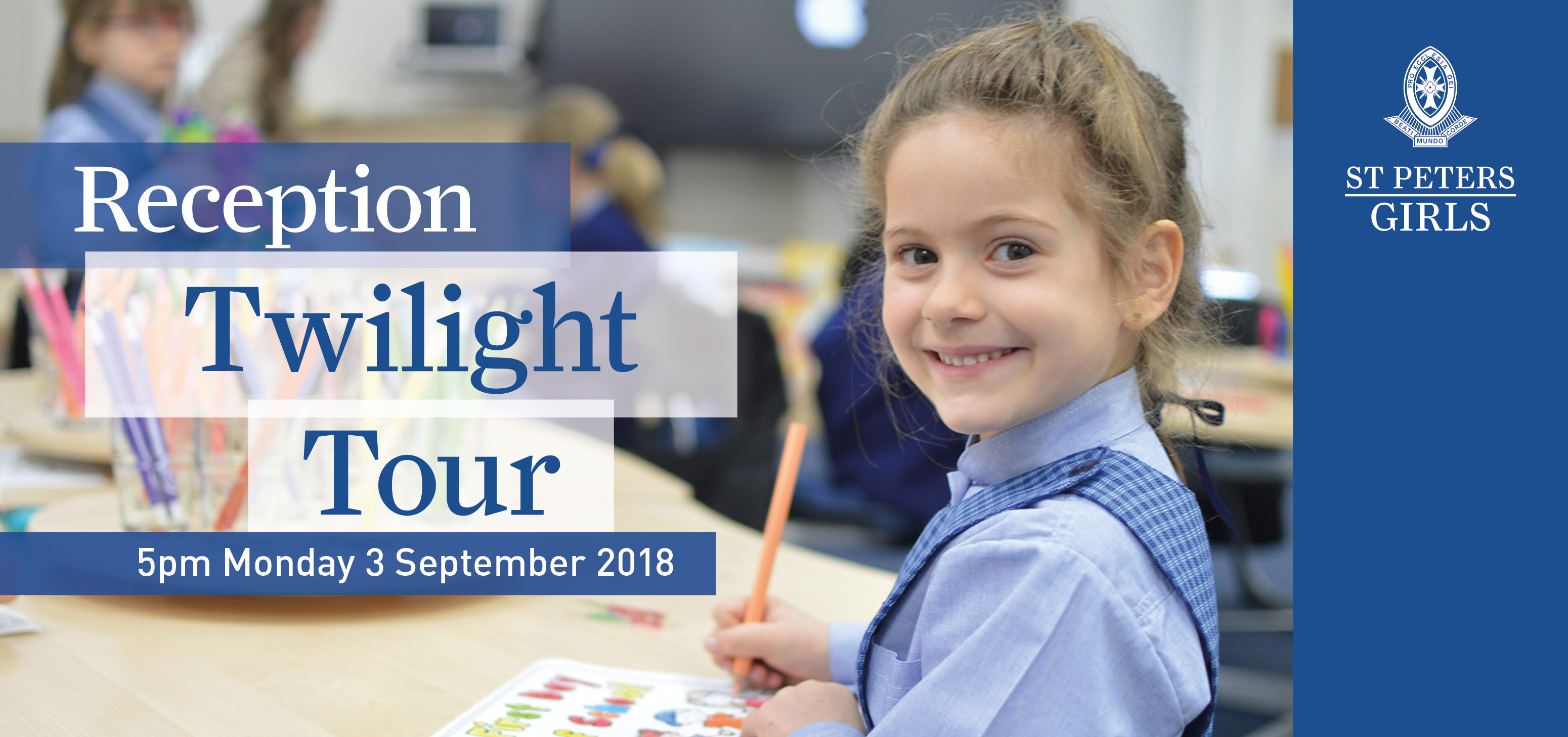
The Acting Director of Early Learning, Kirsty Porplycia, and the Head of Junior School, Suzanne Haddy, warmly invite you to attend a Twilight Tour of the Reception classrooms.
5pm Monday 3 September
Meet in the Arts Centre foyer for refreshments
This is a perfect opportunity to meet Ms Haddy, as well as our Reception teachers and hear all about how your daughter can become a Saints School Girl.
RSVP to Susanna Anderson, Enrolments Manager, at sanderson@stpetersgirls.sa.edu.au
Tamaru Introduces us to Aunty Lynette
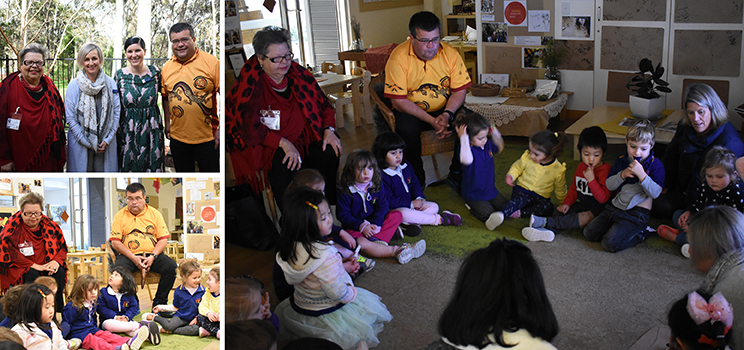
On Thursday 16 August, Kaurna Elder Tamaru introduced us to a very important person in his life, Aunty Lynette.
Together, the Ferguson children and Tamaru shared with Aunty Lynette the ELC’s explorations into further understanding the Kaurna culture and language.
Fathers and Special Friends’ Breakfast
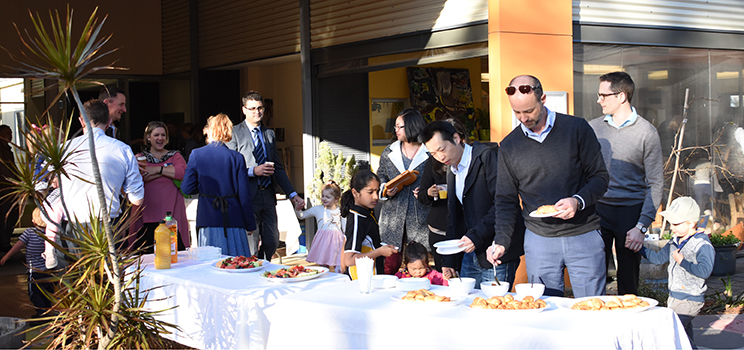
This morning, we welcomed fathers and special friends for a breakfast to celebrate all father-figures.
Our guests were treated to a superb spread of croissants, fresh fruit and coffee as they enjoyed sharing each other’s company alongside the children.
Keep your eyes glued to the St Peter’s Girls’ School Facebook page for the heartwarming video which will be uploaded on Father’s Day.
Parent-Teacher Conversations
Between Monday 17 September and Wednesday 19 September, ELC Parent-Teacher Conversations will take place. There are designated 15-minute time slots for families to meet with your child’s teacher.
We strongly encourage you to book a meeting as it provides us with the opportunity to share your child’s learning journey with details of significant moments and documentation that we have to support this.
Information in regard to Parent-Teacher Conversations will be emailed soon with instructions on how you can book and secure a time through myLink. If you are experiencing any difficulties with your user name and password, please contact the IT HelpDesk via helpdesk@stpetersgirls.sa.edu.au.
Enjoy a Ladies’ Day Out!
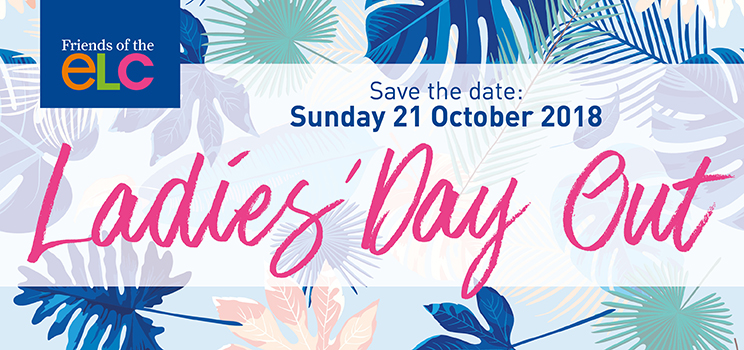
Join us for a relaxing day out especially for mums on Sunday 21 October at S.C. Pannell Wines, McLaren Vale. The bus departs School at 10.45am and returns around 4pm.
The cost is $68 per person and includes a five course share menu for lunch, and the bus to and from the venue. Drinks can be purchased on the day.
Book your ticket via www.trybooking.com/XGNJ
This year, the Friends of the ELC encourage you to donate a pre-loved handbag filled with essential items for the Share the Dignity campaign, which supports homeless women and fights for domestic violence victims.
Choose a handbag, fill it with items you think would make a woman feel special and write a thoughtful note. Handbags and backpacks must be in good to excellent second-hand condition or new. Please bring your donation bag on the day.
A Message from Mrs Yu
亲爱的家长朋友们,
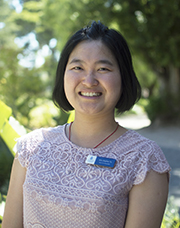
女士节
我们诚邀您参与即将到来的女士节,特别是各位妈妈们。此次女士节定于10月21日周日在S. C. Pannell Wines McLaren Vale举行。巴士于上午10点45分学校出发,下午4点返校。票价(每人68元)可在www.trybooking.com/XGNJ 购买,其中包括午餐的五道菜分享菜单以及往返场地的巴士。当天可以购买饮品。我们希望你那天见到你!
诚挚的问候
Mrs Sophie Yu
News from the Stonyfell Room
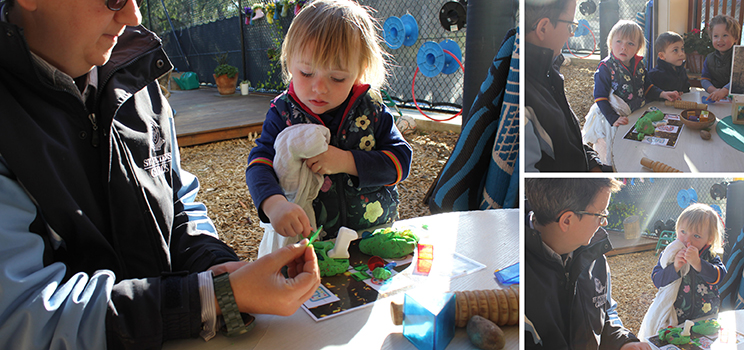
Asha’s silent question – asking questions through our body language
At the ELC, we are very lucky to be able to work in collaboration with other educators across the School. One we have been working very closely with is EDGE (Extended, Differentiated and Gifted Education) Coordinator Becca Burton-Howard. She has been working for some time now in the Hallett Room, in particular developing our EDGElings program.
We have been fortunate to have Becca extend her wealth of knowledge and work alongside the ELC educators with a particular focus on questioning. She joins the teaching team every Wednesday morning at our briefing session and spends time working alongside the key teachers through the morning.
Over the past few weeks, Becca has been joining us in the Stonyfell Room and we have been keen to share with her our inquiry and documentation. One area the Stonyfell Room team has been keen to explore with Becca has been the role that questioning plays in our daily lives. For many of our children, their language may still be developing, so how can they ask a question without words?
We have observed that our children will often ask questions using their body language and expressions. An example of this was with our friend Asha, who met Becca for the first time this week. Over the course of 20 minutes, Asha asked Becca many questions using her body language. This is evident in the photos that were documented.
This is just one example of how our children can communicate to us without words. We, as educators, need to remain open to these questions and make sure we are giving our children the time and contexts to have these questions heard, answered or deepened. Asha’s questions allowed her and Becca to connect and form a relationship and build a mutual understanding.
Laura Reiters
News from the Bell Yett Room
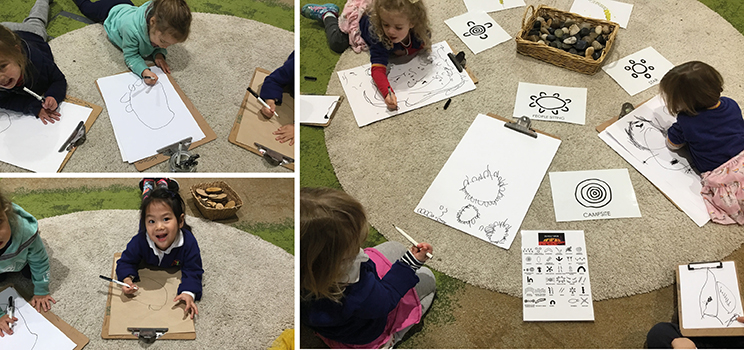
Niina Marni
Palti Circle
Wodli
Ngaitalya
Ban Ban Bayla
Tamaru
Do any of these words sound familiar to you? These are words from the Kaurna language that we are using every day in the Bell Yett Room. We are working with Kaurna Elder Tamaru to engage the children in the language and rituals of the Kaurna people. We always know when Tamaru is near as we hear the familiar sound of his clapping sticks as he walks down the path from the School’s Front Office.
Each morning, we come together in our Palti Circle to have our Ban Ban Balya. We greet the children with Niina Marni. The children are becoming ‘experts’ at creating the symbol for a young man and young lady as we document the number of people in our meeting. We count the symbols to see how many people we have each day. By doing this we incorporate numeracy into our inquiry and demonstrate the value we place on meaningful reconciliation.
Symbols are used as a means of communication for indigenous people. The children have been using their knowledge of symbols to create their own narratives as they tell a story through their mark-making.
- Ned’s narrative:
Ada is in the Palti Circle.
Ada walked on the street to my house.
Ada goes to the dark forest and trips on a stick and gets dirty.
Nell Tierney and Jess Ash
News from the Ferguson Room
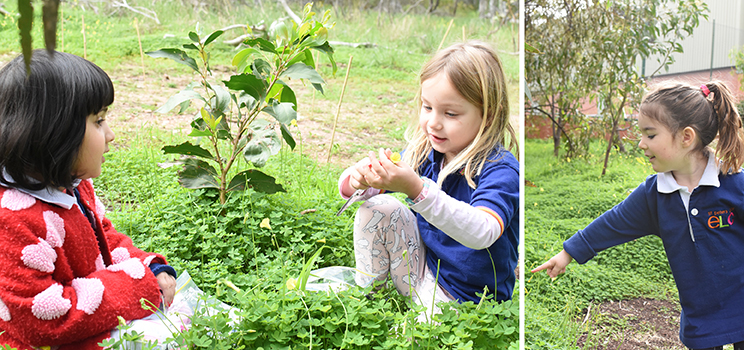
Botanic exploration of Ferguson Park unites our learning community
Recently, Professor Carla Rinaldi from Reggio Emilia gave a provocation to South Australian Early Childhood Educators: to shift our focus from children as individual learners to a focus on how they learn both in a group and as a group. As human beings, we exist in relationship to others and, as learners, we can support, inspire and share knowledge with each other to enhance and grow our capabilities. We know as adults that working collaboratively enables us to develop our ideas, our theories and our potential. And it is so with children.
In the Ferguson Room, we have several projects that are running concurrently, giving children opportunities for choice, for learning new and exciting things, and for deepening their connections with one another. ‘Co-researching and co-constructing knowledge’ are terms we use as frequently as ‘teaching and learning’.
In our botanical exploration of Ferguson Park, our intention for the children is for them to discover and learn about the different plants that exist in their local bushland. This investigation incorporates Science, Mathematics, literacy and artistic skills. Using the tools of a botanist – sample bags, scissors, drawing materials, reference books and microscopes – the children are collecting and researching a specimen of a plant that is interesting to them.
Children have a great desire to share their knowledge and help each other, and this is a natural way to extend and support children in their daily work. This is a sustainable use of resources – the children themselves are confident to teach and learn from each other, of course under the watchful eye of the adult. How different this is to the traditional model of one teacher as the source of all knowledge to the many children in their class.
Recently, children who have made several visits to the park to collect specimens have eagerly shown those making their first field trip the purpose of the tools and how to find a good specimen. In the classroom, children have enthusiastically searched the reference book for a possible answer to the identity of their friend’s plant.
Our upcoming family walk in Ferguson Park, Saturday 8 September from 10 – 11am, is an opportunity for us to embrace this model of group learning. Your participation in this event is a special chance for the children to teach you what they know, to be experts and to demonstrate their leadership skills. We are certain you will be amazed and delighted at what you will learn from them.
Mel Angel
News from the Hallett Room
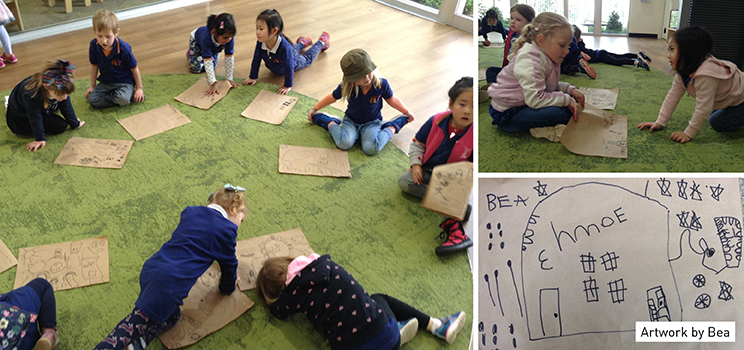
Early in the term, Kaurna Elder Tamaru was warmly invited to join our Morning Meeting or Ban Ban Balya as we call it in Kaurna language. Our friends became quickly fascinated as he began to draw symbols that represented his journey from his home to our ELC, incorporating the children’s representation of our Palti Circle as his destination. Tamaru has shared with us that when we join our stories with the stories of the Kaurna people, we are working towards meaningful reconciliation.
From that moment, the children have become inspired to create a representation of their own journeys from their homes to ELC. They have curated their own narratives through the power of mark-making and have begun to use and create symbols to represent information and data.
Tamaru’s journey has become an inspiring vehicle for the children to explore Mathematics as they begin to investigate why mathematicians use symbols, particularly when collecting and recording data.
“Mathematicians use symbols to draw something in a short way.” – Teddy
“We are thinking as mathematicians, not artists. If we were artists, we would draw. But we need to use symbols like mathematicians. It’s a quick way.” – Lucy
The children have been eager to record many elements of their personal journeys including the number of people living in their houses, the length and direction of their journey and important landmarks that they pass. They have used a range of standard symbols including numerals, shapes, letters, images and characters from other cultures and countries. Many children have created their own symbols as they begin to notice that no two journeys are the same.
Through the recording of the journeys, elements of Mathematics have emerged including:
- Using symbols to represent quantities and aspects of measurement including distance and time
- Collecting, recording and interpreting data
- Using Mathematical vocabulary to articulate information
As we delve deeper into discovering how we can represent our journeys through a mathematical lens, the children are transferring their knowledge and understanding to other inquiries and rituals within the Hallett Room. As this occurs, the children have become passionate to share their symbols with others and are inspired to compare their information with friends and educators through many contexts.
Leanne Williams

